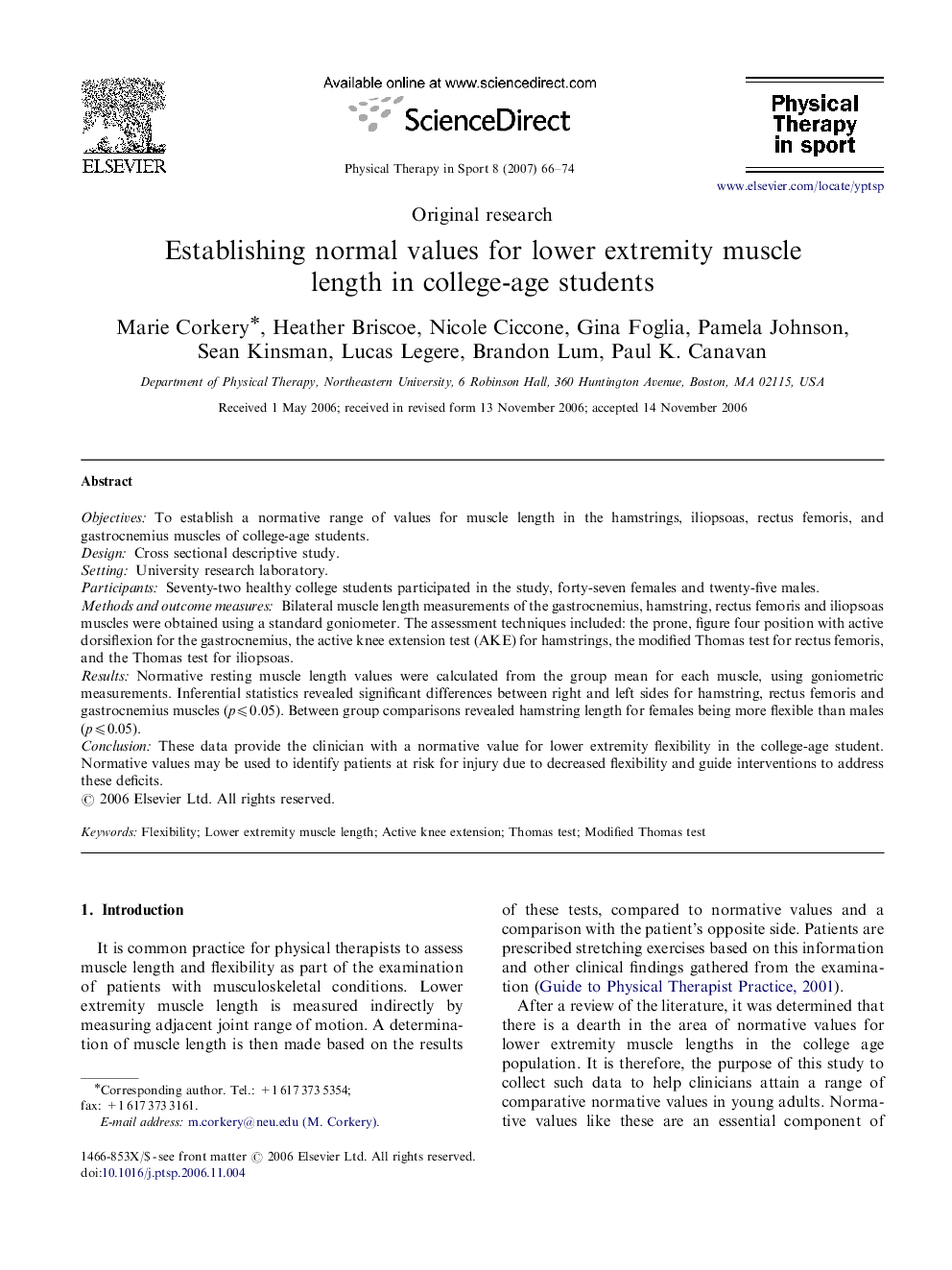| Article ID | Journal | Published Year | Pages | File Type |
|---|---|---|---|---|
| 2714287 | Physical Therapy in Sport | 2007 | 9 Pages |
ObjectivesTo establish a normative range of values for muscle length in the hamstrings, iliopsoas, rectus femoris, and gastrocnemius muscles of college-age students.DesignCross sectional descriptive study.SettingUniversity research laboratory.ParticipantsSeventy-two healthy college students participated in the study, forty-seven females and twenty-five males.Methods and outcome measuresBilateral muscle length measurements of the gastrocnemius, hamstring, rectus femoris and iliopsoas muscles were obtained using a standard goniometer. The assessment techniques included: the prone, figure four position with active dorsiflexion for the gastrocnemius, the active knee extension test (AKE) for hamstrings, the modified Thomas test for rectus femoris, and the Thomas test for iliopsoas.ResultsNormative resting muscle length values were calculated from the group mean for each muscle, using goniometric measurements. Inferential statistics revealed significant differences between right and left sides for hamstring, rectus femoris and gastrocnemius muscles (p⩽0.05). Between group comparisons revealed hamstring length for females being more flexible than males (p⩽0.05).ConclusionThese data provide the clinician with a normative value for lower extremity flexibility in the college-age student. Normative values may be used to identify patients at risk for injury due to decreased flexibility and guide interventions to address these deficits.
